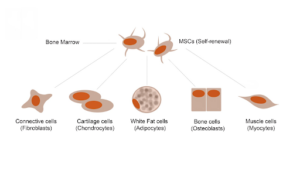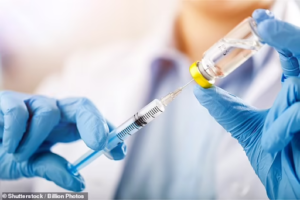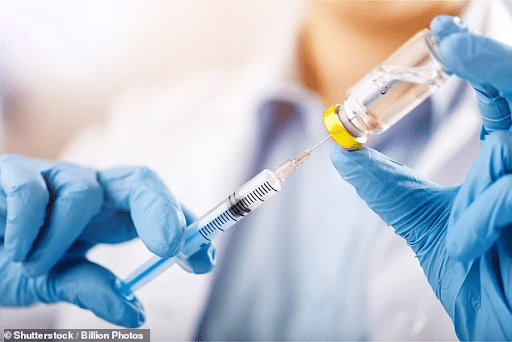Summary of Exosome Therapy
Exosomes are messenger cells that have both growth factors and anti-inflammatory properties. When mixed with PRP, Exosomes migrate the PRP to the injured area to facilitate healing and decrease inflammation. Exosomes mixed with PRP provide three times the growth factors necessary to repair damaged tissue.
How do Exosomes help in Regenerative Medicine?
Regenerative medicine has become the largest buzzword in the medical community. Why? Because research scientists have finally realized that the human body can heal itself. Regenerative therapies tap into the body’s powerful innate ability to heal itself by targeting injured areas with concentrated mediums like PRP, PRF, and Exosomes. Research is expanding every day, showing the efficacy of these treatments in testing and repairing musculoskeletal and joint-related injuries.

What are Exosomes?
Exosomes are extracellular vesicles: tiny, fluid-filled sacs that exist outside of the cells inside your body. They communicate with other cells and facilitate essential functions like transferring DNA, RNA, and proteins to other cells in your body. By communicating with other cells, exosomes help heal damaged tissue, improve neural communication, and increase vascularization. They make a perfect companion to the healing abilities of PRP.
Combining PRP with Exosomes provides a comprehensive treatment approach for injured tissues by adding more growth factors to the injection and messenger RNA to communicate with cells.
Exosomes may heal injuries better than standard PRP injections alone. The combination of PRP and exosomes provides faster relief, a more rapid return to physical activity, and decreased swelling at the injection site.
Unlike stem cell therapy, exosome therapy doesn’t involve using donor cells in your body. Instead, exosomes are extracted from donated human mesenchymal stem cells (MSCs) and sterilized.
The exosome solution contains valuable lipids, messenger-RNA, micro-RNA, signaling cytokines, and proteins. Exosome therapy is administered through direct injection to the injured area.
Exosomes are powerful elements that can restore cells throughout your body. They enhance cell-to-cell communication, which is essential for overall cell health. Exosomes derived from mesenchymal stem cells (MSCs) showed that MSCs produced higher amounts of exosomes than other cells. (2)
Compared to adult stem cells, exosomes contain nearly three times the amount of growth factors. More growth factors means a better ability to restore and revitalize target cells.
Mesenchymal stem cells

Mesenchymal stem cells (MSCs) are multipotent stem cells found in the bone marrow that are important for making and repairing skeletal tissues, such as cartilage, bone, and fat. With age and disease, MSCs predominantly convert into lipid-accumulating fat cells.
Exosomes deliver messages to your cells and instruct them to heal, regenerate, and reduce inflammation. When exosomes are injected into an area experiencing chronic pain or inflammation, they send messages to the cells in that area so that they can heal.
Exosomes deliver messages to your cells and instruct them to heal, regenerate, and reduce inflammation. When exosomes are injected into an area experiencing chronic pain or inflammation, they send messages to the cells in that area so that they can heal.

How long does it take to work?
Regeneration takes time. Healing and regeneration won’t happen overnight. Exosomes combined with PRP trigger a series of responses within your body that will eventually help reduce your symptoms, alleviate pain, and help your body heal.
Different factors will affect how quickly you experience results. Age, for instance, can play a part in your results because as the body ages, it becomes less effective at utilizing and responding to stem cell messages. The severity of your condition can also affect your results. For most people, the most apparent results tend to appear within three to four months of treatment, and the best, most dramatic results appear within nine months.
How long will the results last?
Results vary from person to person. How you care for your body will determine the results you get. It is important to modify your diet, increase your exercise routine, improve your sleeping habits, and get control of your emotional state.
Changing your diet to include anti-inflammatory foods is critical if you want to slow down or stop inflammatory markers in your body. Eliminate junk food, carbohydrates, sugar, refined oils, and refined foods.
Food Sensitivity Testing
Consider getting a Food Sensitivity test to determine what foods you might be sensitive to that may be causing an inflammatory response in the body. Non-traumatic inflammation often starts in the gut, and if not controlled, inflammation can leak out (leaky-gut syndrome) into your bloodstream and affect your musculoskeletal system causing persistent pain. The goal is to do everything possible to mitigate inflammation in your body. Doing this can ensure that your results will likely last for years.
Is Exosome Therapy Safe?
Exosome therapy is extremely safe. Not only is it a very safe procedure, but it is also an effective way to heal, restore, and repair the body. Your body will not reject exosomes because it is a natural product it utilizes daily. The healing is from the inside out.
Are Exosome Therapy and Stem Cell Therapy the Same?
Stem cell therapy and exosome therapy are not the same treatments. They do have similarities, but exosome therapy is more advanced and has better healing properties with more than three times the growth factors. Exosome therapy aims to deliver signals to the cells that require healing and regeneration, instructing them to heal and renew the treatment area.
Who Is a Candidate?
Anyone suffering from joint pain or musculoskeletal injuries may qualify for Exosome therapy.
An initial consultation with one of the medical experts at Hope Health & Wellness will determine if exosome therapy is right for you. During this consultation, we will review your medical history, discuss your current state of health, and confirm that you are a treatment candidate.
Exosomes and PRP Treatment for Chronic Disc Herniations
The treatment options for chronic neck and back pain due to disc herniations are minimal. Conservative treatment of Low Back Pain (LBP) includes non-drug therapy, drug therapy, interventional pain management, and chiropractic care. If conservative treatment fails to relieve pain, surgery can be considered. However, surgical procedures such as spinal fusion are invasive and often require long postoperative recovery times, with a high risk of surgical complications and increased postoperative recurrence rates (X. Sun et al., 2020). Even if conservative and surgical treatment relieves LBP, it will not repair the disc and the musculoskeletal structures, so you have a high chance of having LBP again.
Phases of Healing – Exosome, and PRP
Growth and Remodeling Phase –
- During this phase, you may feel increased pain. This is due to the Exosomes transporting the PRP to the injured site and remodeling the tissue for the regenerative phase. Exosomes go to work to break down and reduce inflammation, while PRP provides growth factors to the injured area to promote healing.
- This phase occurs during the first 4-6 weeks after receiving the injection
Regeneration Phase
- During this phase, PRP goes to work and provides growth factors to the injured area to promote healing.
- This phase starts at 4-6 weeks after receiving the injection and may last up to 9 months after the treatment. That means that the regeneration phase can last up to nine months, continuing to repair the injury being treated.
References
(1) Edgar, James R. “Q&A: What Are Exosomes, Exactly?” BMC Biology, BioMed Central, 13 June 2016, https://bmcbiol.biomedcentral.com/articles/10.1186/s12915-016-0268-z.
(2) Yu, Bo, et al. “Exosomes Derived from Mesenchymal Stem Cells.” International Journal of Molecular Sciences, vol. 15, no. 3, July 2014, pp. 4142–4157., doi:10.3390/ijms15034142.
Learn More about how PRP and Exosomes can help treat your pain through our treatment protocol, The Trinity Method.


Subscribe To Our Newsletter
Join our mailing list to receive the latest news and updates from our team.
You have Successfully Subscribed!